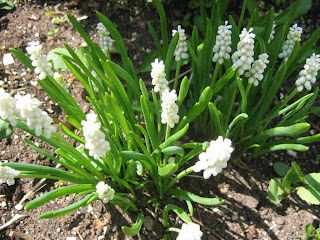 Sweet Cicely has triangular-shaped feathery leaves. They add a graceful lacy look to the garden and can grow to a foot or larger. Their light green colour and shape are a good contrast to other foliage. They also taste and smell like licorice or anise. The flowers are white and are borne in large umbrels above the plant. The seeds are dark in colour when ripe and resemble fennel and caraway.
Sweet Cicely has triangular-shaped feathery leaves. They add a graceful lacy look to the garden and can grow to a foot or larger. Their light green colour and shape are a good contrast to other foliage. They also taste and smell like licorice or anise. The flowers are white and are borne in large umbrels above the plant. The seeds are dark in colour when ripe and resemble fennel and caraway. All parts of this plant are edible. It has been used in many ways. The seeds have been pounded and used as a furniture and floor polish. All parts of the plant have been used in medicine. The roots have been boiled and used as a remedy for stomach disorders. The plant is currently being studied for as an artificial sweetener for diabetics. The roots have been used as an antiseptic.
In the kitchen, the leaves have been used in salads, soups, stews and as a sweetener for desserts. The roots can be cooked and eaten as a vegetable or chopped and added cold to salads. Unripe seeds can also be added to salads.
I have never had the courage to use this herb for anything other than a garden plant, but I may try a recipe or two this summer. There are many on the Internet. Having said all of this, I want to warn you that there are several other plants that look very similar to Sweet Cicely, but are highly poisonous. Just a precaution!
 Family: Apiaceae. Genus: Myrrhis. Species: M. odorata
Family: Apiaceae. Genus: Myrrhis. Species: M. odorata
Common Name: Sweet Cicely










































 Once the piece has been basted, place it on the background fabric as directed in the pattern. In this case it will go diagonally across the piece. Pin it in place. This is the bias of the background fabric so be careful not to stretch it.
Once the piece has been basted, place it on the background fabric as directed in the pattern. In this case it will go diagonally across the piece. Pin it in place. This is the bias of the background fabric so be careful not to stretch it. 















